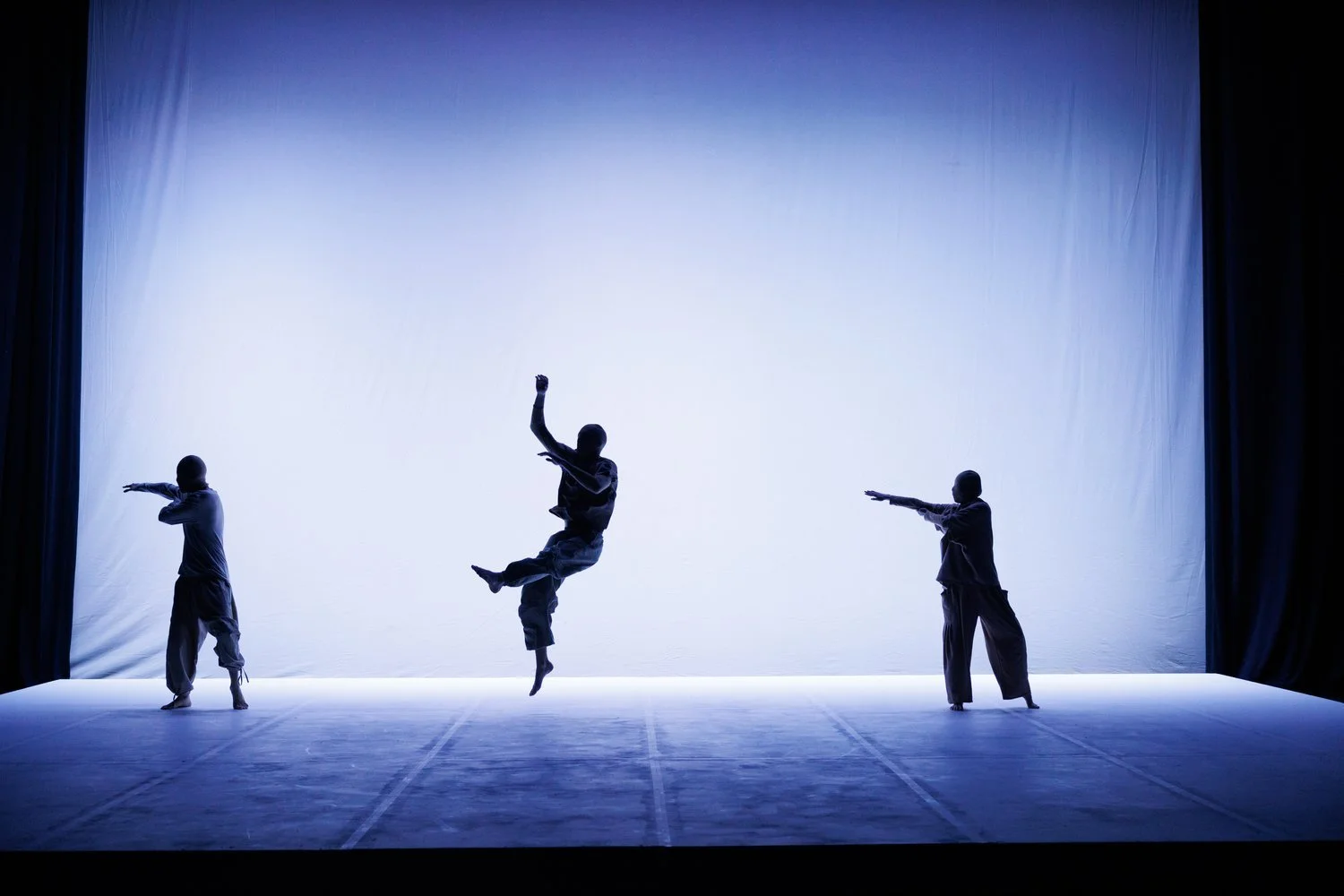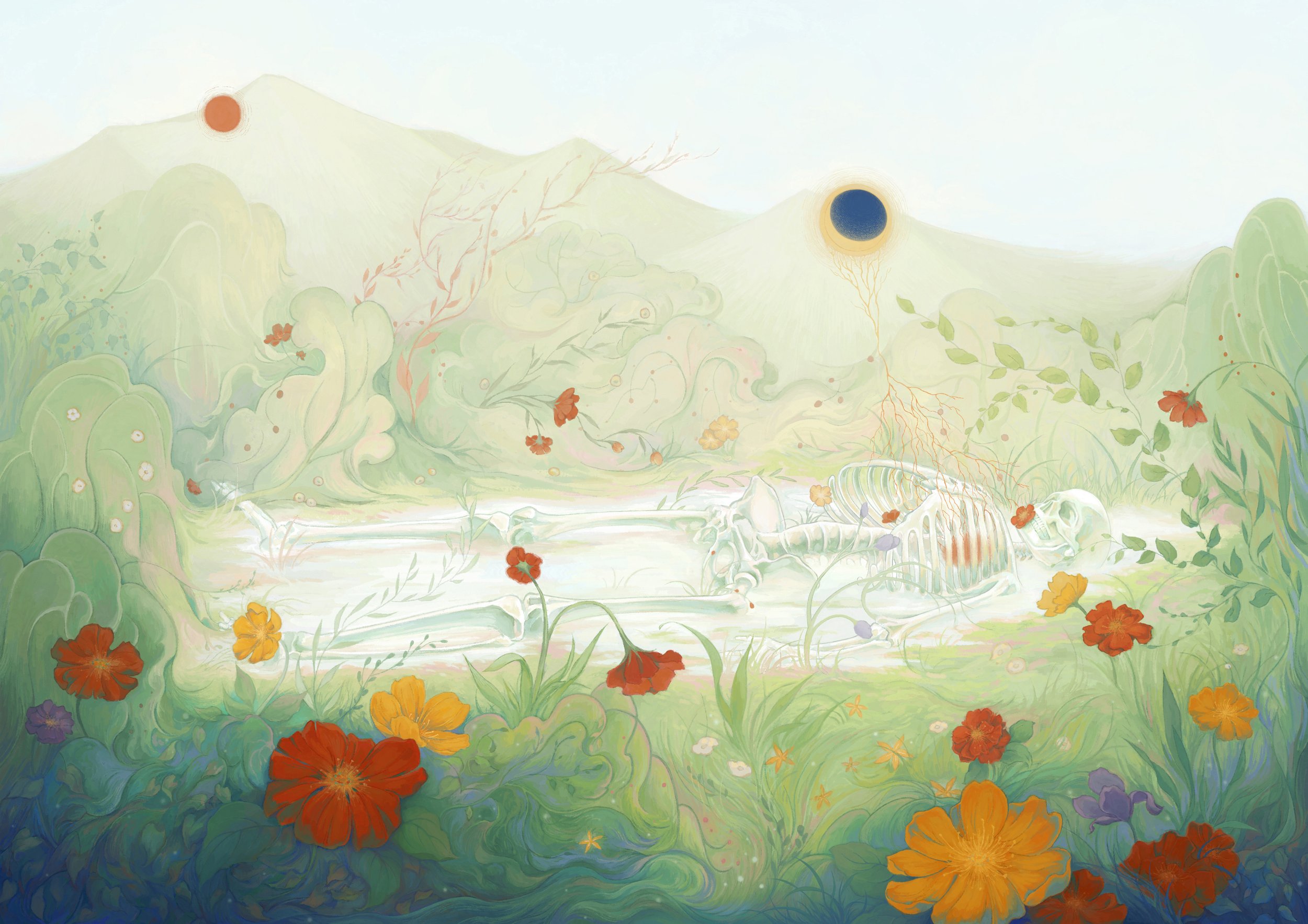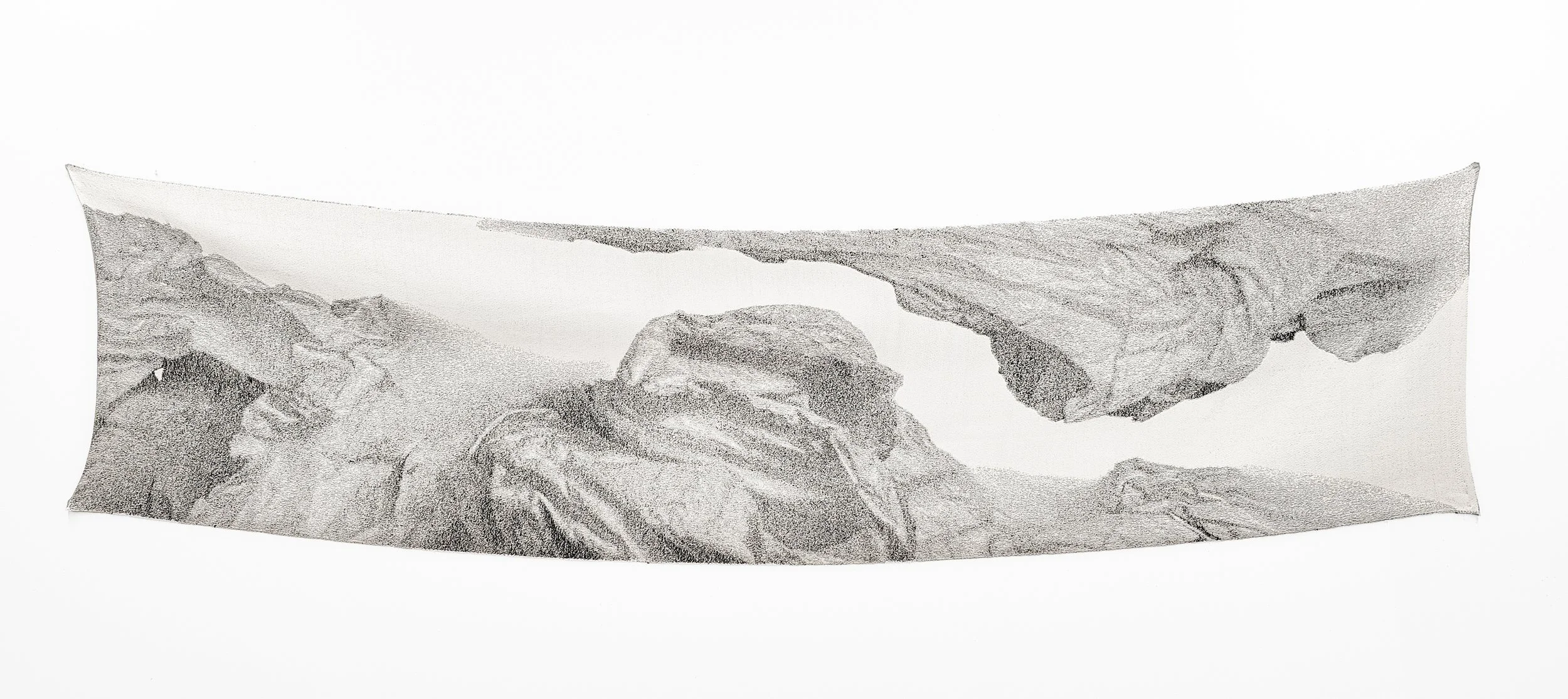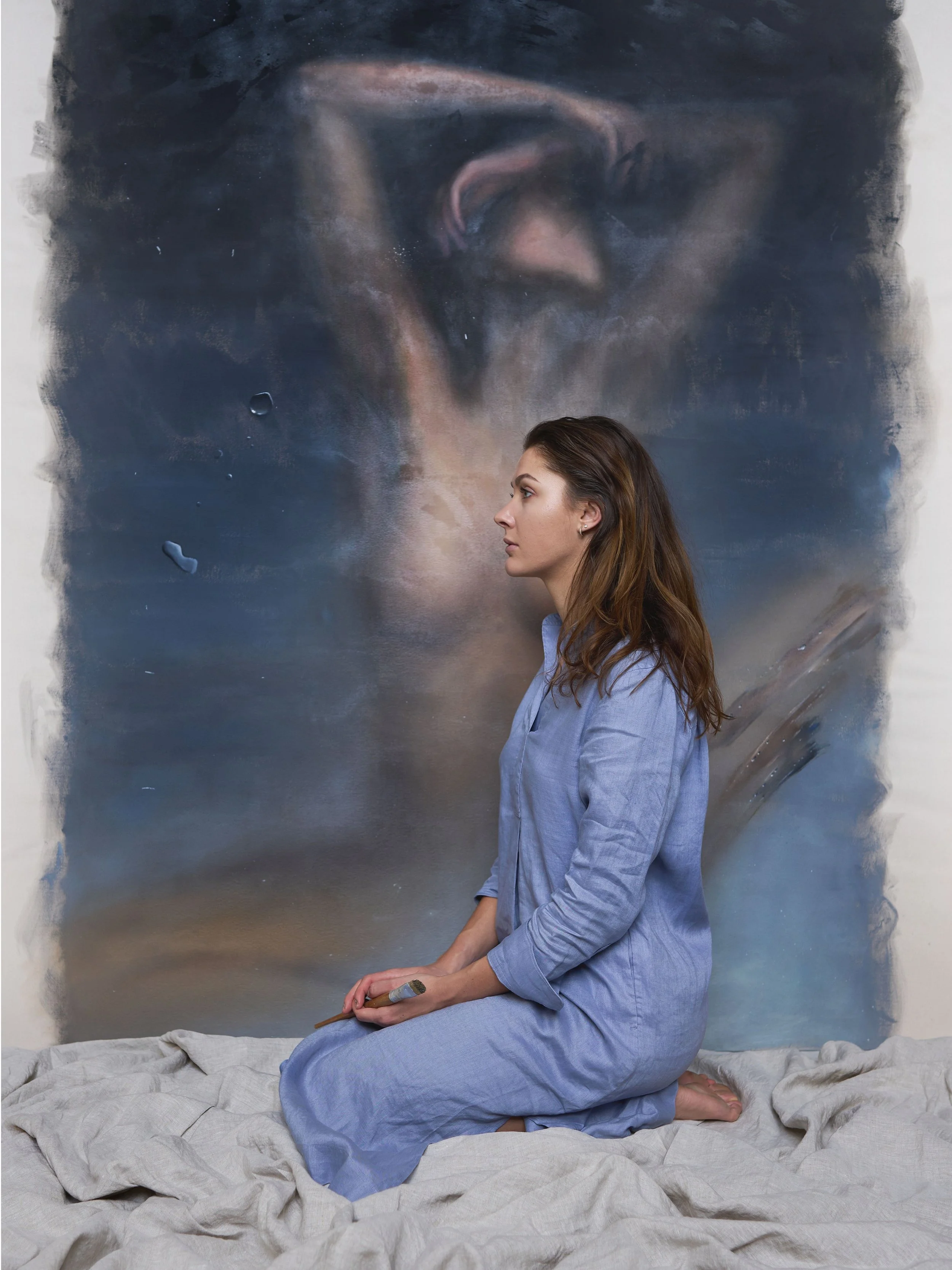Keight is a multidisciplinary artist who explores a variety of experiments and mediums, ranging from “traditional” art to immersive installations and digital works. Equal parts artist and designer, and both conceptual and expressionist, Keight takes the viewer on a visual journey through his unique language, peppered with references and symbolic pictograms that circumscribe his abundant universe.
INTERVIEW | Tanapol Suriyachottakul
Tanapol Suriyachottakul is a Thai artist born in 2001 in Bangkok. He approaches his art with a methodical, almost analytical mindset, likening his process to solving equations. Central to his work is the concept of Nihilism, which he portrays through calculated compositions and symbolic objects like mannequins and metallic forms. His paintings construct a world of distorted realities.
INTERVIEW | Emi Avora
Emi Avora is a Greek-born, UK-trained, and Singapore-based artist. She subject matter from her everyday life in Asia as well as her Greek ancestry with a focus on a combination of interior spaces, still life, and landscape. Often, her paintings present encounters or ‘conversations’ between seemingly disparate objects or symbols.
INTERVIEW | Alina R.J
Alina R.J. is a London-based multidisciplinary artist with a Central Asian background, currently pursuing her Master's degree at the Royal College of Art. Alina's recent research focuses on Eastern philosophies, Jungian psychology – specifically Individuation and The Self – as well as tools to reconnect with this part of our psyche, including meditation.
INTERVIEW | Moyu Yang
Within the vibrant artistic landscape of London, Moyu Yang garners recognition as an artist of notable acclaim. Her creative pursuits span across sculpture, set design, body performance, experimental film and fashion, while showcasing a diverse artistic practice. In the "Presence" series, she highlights the neglected factors of language and inspires feminists to reflect on themselves.
INTERVIEW | Fang Yutao
Fang Yutao is a Los Angeles-based multidisciplinary artist from China with a strong background in architecture. She reshapes traditional narratives by incorporating complex historical symbols that transcend cultural boundaries, drawing on premodern mythology that embraces pantheism and animism to redefine anthropocentric metaphors and dismantle traditional masculine narratives.
INTERVIEW | Yuehan Hao
Yuehan Hao is an artist who focuses on visual creation. Her work takes as its theme the dialectical and contradictory relationship between the stillness of life and the retention of photography. It reflects on the relationship between the mother's death and the changes in family relationships and creates discussions around the correlation between the spiritual consciousness of life and the body's images.
INTERVIEW | Ole Tersløse
Ole Tersløse is a Danish artist. The artist deliberately positions himself in a realm of ambiguity, rendering his work difficult to categorize. This ambiguity partly arises from Tersløse's technique. He crafts the majority of image elements from scratch using 3D computer programs also employed in gaming and film visual effects. In these programs, he can manipulate the illusion to his liking, resulting in images that are simultaneously realistic and alienating.
INTERVIEW | Yueming Li
Driven by a fascination with the narrativity of visual art, Yueming Li seeks to delve into the visualization of emotions, feelings, and the inner world through metaphors and symbols. Having lived abroad, Yueming Li contends that visual language erases barriers between diverse languages and cultures. Her upbringing in varied cultural contexts has situated her in an "in-between" state, blending Eastern and Western expressive approaches.
INTERVIEW | Arman Khorramak
Arman Khorramak, a prominent artist born in 1986 in Tehran, Iran. Ever since he was a child, he had a vivid imagination that allowed him to see things in a unique way. He would create stories in his mind and draw them out instead of talking about them. His process is fueled by his passion for music and his love for literature and cinema, which he blends into his artwork.
INTERVIEW | Sitong Yin
Sitong Yin is a Chinese artist and the granddaughter of a tailor. She is primarily a fiber artist and works around fiber and textiles, installations, and performance, currently based in Chicago, IL. Her work explores translations between materials, places, and cultures and the poetic and spiritual moments revealed in the gaps of translations.
INTERVIEW | Xinyu Zhang
Xinyu Zhang, also known as DayDay, is a contemporary artist originally from Wuhan, Hubei, China, and currently based in New York. Drawing inspiration from daily observations, existential reflections, and a relentless curiosity to explore diverse materials, Xinyu's art is distinguished by minimalist lines and symbols, continually seeking a delicate balance between design principles and fine art.
INTERVIEW | Xinyi Yang
Xinyi Yang is a young potential artist and interdisciplinary designer. Her paintings, which combine ancient East Asian poetry beauty with the reflection of contemporary philosophy, primarily feature oil and watercolour, exuding vitality as they continually explore light within darkness, specifically reflected in the relationship between people and the environment.
INTERVIEW | Yu Mao
Yu Mao has established herself as a Multi-Disciplinary Artist based in Los Angeles. Driven by a profound fascination with the intricate dynamics between people of various cultures, genders, and social backgrounds, she skillfully weaves her narratives using symbols, metaphors, and dreams. Her chosen mediums of expression encompass films, installations, sculptures, and photography, each serving as a canvas for her storytelling.
INTERVIEW | Daiqing Zhang
Daiqing Zhang (b. 1998, Beijing, China) now lives and works in Providence, RI, and Los Angeles, CA, USA. Her practice is informed by phenomena in everyday life and their transcendental and celestial significance. Zhang’s work often takes form in highly crafted experimental instruments underscored by phenomenology, recreating and staging serendipitous moments with hot glass.
INTERVIEW | Raine Storey
Raine Storey is a Canadian visual artist based in London, England. Storey’s work combines her Fine Art and Art History degree with her ‘higher education’ at the ‘school of hard knocks’. It is the latter that led her examination into why she creates. Storey aims to contribute to the renewed identity of raw materials. The artwork recycles and preserves historic waste, including London’s House of Parliament restoration, to place back on the walls.
INTERVIEW | Xingrui Xu
Xingrui Xu (b.1995; China, Kunshan) lives and works in Chicago, Illinois. He expands and develops an engagement with ceramics and the conditions for its contemporary practice. His practice involves ceramics, painting, sculpture, and land art. He reflects on the impact of contemporary art while working to push the boundaries of ceramics in contemporary art and expand its influence.
INTERVIEW | Danzhu Hu
Danzhu Hu is an award-winning Chinese visual storyteller, currently specializing in illustration and fine art painting. Through her practice, Hu wishes to create a world where the most cryptic, subtle, and complicated emotions can be captured, translated, and cherished. Hu's visual language also plays into the sense of emotiveness. Her work is filled with aesthetic cues reminiscent of nature's organic forms, where she hides subtle metaphors.
INTERVIEW | Ruchita Newrekar
Ruchita Newrekar is a jewelry designer and contemporary jewelry artist. Despite her success in the commercial realm, she remains dedicated to her artistic roots and continues to create one-of-a-kind pieces that showcase her unique artistic voice. Her personal artworks delve deeper into the exploration of connections, emotions, and the transformative power of jewelry.
INTERVIEW | Caroline Kampfraath
Caroline Kampfraath is a Dutch sculptor from Amsterdam. Her works consist primarily of elements that she fuses into the total artwork, often thematic pieces and installations. Caroline is socially driven, both as a person and as an artist. In her work, she highlights the urgency and impact of global crises, which are currently upon us and permeate our collective consciousness.































